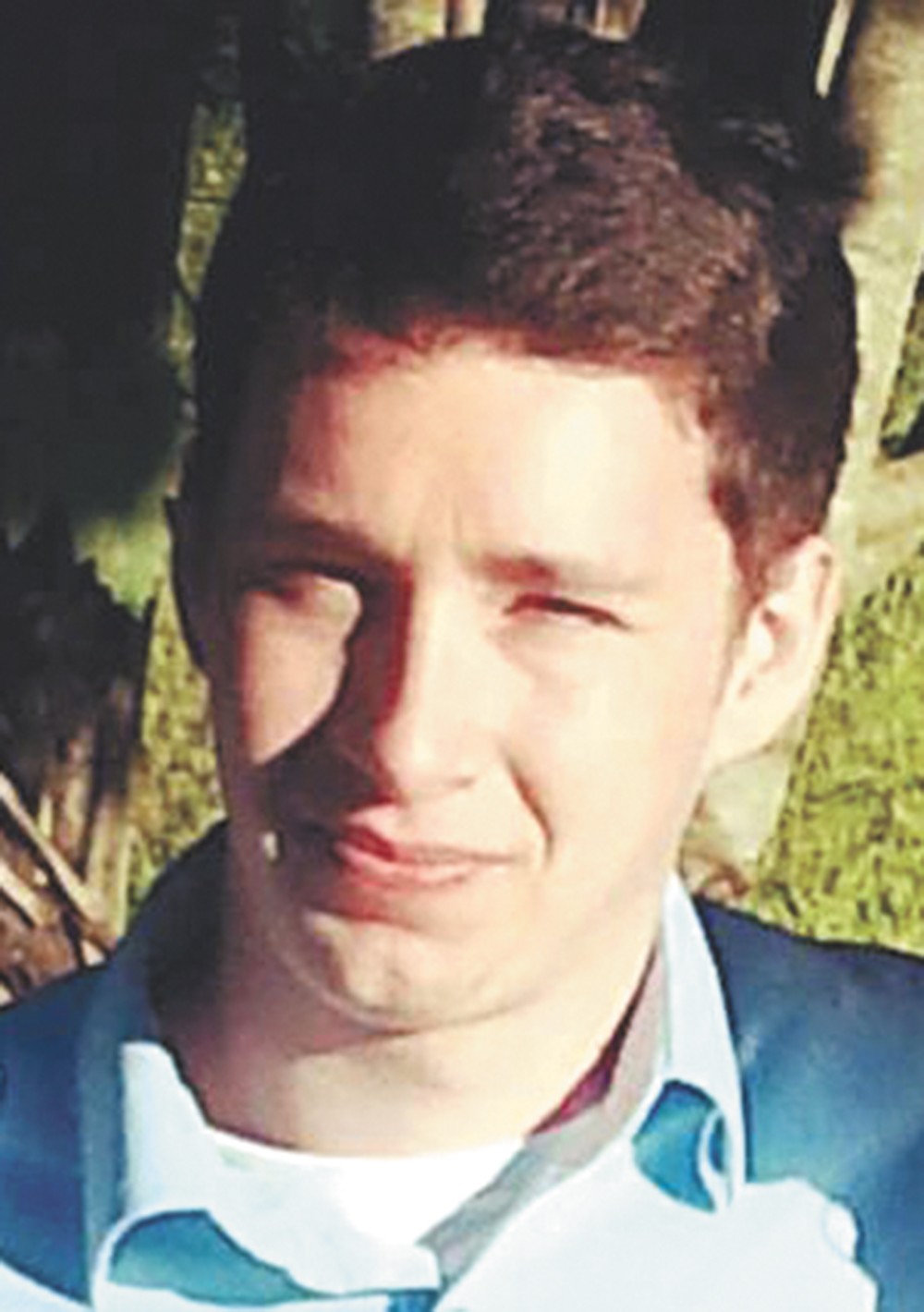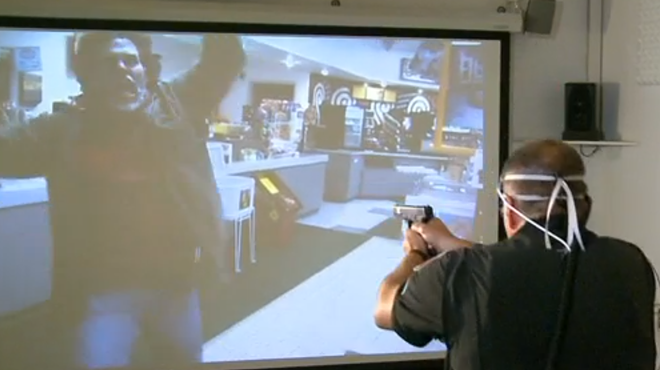When he pulled off the black balaclava covering his face, Spokane County Sheriff's deputies report they could see Jedadiah Zillmer crying. Blinking against the bright spotlights and passing traffic, he held in his right hand a black semiautomatic pistol pressed up against his own chin.
"I don't want to live after this," he told deputies.
Zillmer, 23, a recently discharged U.S. Army cavalry soldier, wore a bulletproof tactical vest loaded with handguns and ammunition. He stood now along the driver's side of his red Honda Civic on Feb. 11, surrounded by deputies and state troopers, ordering him to drop the weapon.
An empty bottle of Captain Morgan's sat on the nearby passenger seat. Zillmer had spent the day drinking after a fight with his wife. His family says counseling had failed to rein in recent mental distress. At about 7 pm, he set off heavily armed and called 911, asking for police to kill him.
After a high-speed pursuit along Interstate 90, reports state Zillmer's Honda was stopped at Indiana and Sullivan. He emerged with a handgun angled up under his chin. A sergeant tried to get him to calm down and talk.
"What can you do for me?" Zillmer asked.
Hopeless and distant, Zillmer reportedly went down on his knees, telling authorities he was going to remove the bulletproof vest. Deputies watched carefully as he unstrapped the front of the vest and started to lift it up, obscuring his face.
While Zillmer had not yet pointed his gun at anyone but himself, his left hand went under the vest, seemingly into a flap or pocket, and deputies feared he might try pulling another weapon. Six deputies opened fire, killing him.
A legal analysis of the shooting released last week by the Spokane County Prosecutor's Office includes many new details about the incident, including the beliefs each deputy used to rationalize killing Zillmer. It presents a stark look at how law enforcement officers often perceive tense confrontations, and how they come to justify the use of deadly force.
"Officers gave [Zillmer] numerous opportunities to end this peacefully," the legal report concludes. "Officers clearly had probable cause to believe Mr. Zillmer posed a threat of serious physical harm to officers and civilians alike."
Retired Bellevue Police Chief D.P. Van Blaricom, who has reviewed hundreds of officer-involved shootings as a certified expert witness, tells the Inlander such shootings must be evaluated as justified or not based on the "totality of the circumstances."
"They have to be judged on a case-by-case basis," he says. "You have to look at everything that's going on."
Zillmer's death marked the second time in a year a local suspect was killed for suspiciously reaching into a pocket. In May of 2013, Spokane Police Department officers fatally shot 21-year-old Justin Cairns when he reportedly reached into his basketball shorts for a cellphone.
Beyond legal justifications for deadly force, many departments also have policies clarifying when deadly force may be used. Those policies, which are identical for both the Spokane County Sheriff's Office and Spokane Police Department, require a threat of imminent harm to officers or bystanders.
"An imminent danger may exist even if the suspect is not at that very moment pointing a weapon at someone," the policy states. "For example ... the person has a weapon or is attempting to access one and it is reasonable to believe the person intends to use it against the officer or another."
Cairns' family has filed a request with the Spokane Police Ombudsman to clarify whether the policy should allow deadly force against someone who does not have a weapon in hand, but may have something in a pocket. That inquiry has not yet released any findings or recommendations.
Police contend Cairns was a suspect in a shooting death hours earlier, which elevated his apparent risk to officers and likelihood of being armed. Deputies also cited an increasing number of risks as they confronted Zillmer.
"That's difficult to measure," Van Blaricom says of assessing such risks. "There's no bright line."
When Zillmer set out, desperate and drunk, he told dispatchers he decided he was a "psychopath," and asked about police procedures for shooting someone, according to reports. Every new update from dispatchers seemed to ratchet up the risk: a suicidal man with a gun, then armed with multiple guns, a combat veteran, armed with an assault rifle, wearing body armor, threatening a shootout — and finally warning he may resort to shooting civilians if "police take too long" to kill him.
"When I am done with you," Zillmer tells a dispatcher, "I am going to hang up and then rock and roll, then uh, when they shoot me in the head, it will be done."
Deputies reported they had many of those threats or concerns in the back of their minds when they opened fire. Most cited fears regarding what Van Blaricom refers to as the "reactionary gap," in which an initial action can occur before another person has time to respond.
"Deputy [Jeff] Thurman ... knew from his training that action will always beat reaction," the legal analysis explains, "meaning Zillmer could get off a shot before he could react to it, giving [Zillmer] tactical advantage."
Zillmer's veteran status also worked against him, with several deputies citing increased apprehension about his combat training, or the possibility of a grenade or improvised explosive device. After the shooting, authorities held back for 30 seconds as they cleared the area for possible explosives.
"Deputy [Dale] Moyer said Zillmer made eye contact with him several times," the legal analysis states. "Deputy Moyer felt [Zillmer] was picking out targets of opportunity based on his military experience and mental status."
Fatal decisions get made in split seconds. Months later, it's impossible to tell if Zillmer was trying to draw a weapon or simply struggling to take his vest off. No one knows if his actions were a defiant last stand or a desperate call for help.
"These things will always be judged in hindsight," Van Blaricom says. "People are going to second-guess. ... We just don't know." ♦





















